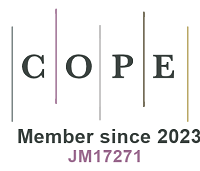REFERENCES
1. Jiang G. Preface to the special topic on environmental pollution and health risk. Natl Sci Rev 2016;3:409.
2. Zamora-Ledezma C, Negrete-Bolagay D, Figueroa F, et al. Heavy metal water pollution: a fresh look about hazards, novel and conventional remediation methods. Environ Technol Innov 2021;22:101504.
3. Li Q, Wen D, Qin C, Qian Y, Fu R, Lin S. Physical, chemical, biological, and synergistic technologies for remediation of pesticide-contaminated soil. Rev Environ Contam T 2024;262:7.
4. Gannett M, DiTommaso A, Sparks JP, Kao-Kniffin J. Microbial nitrogen immobilization as a tool to manage weeds in agroecosystems. Agr Ecosyst Environ 2024;366:108904.
5. Cao Y, Wang L, Wang Y, et al. Functional fungal pellets self-immobilized by mycelium fragments of Irpex lacteus WRF-IL for efficient degradation of sulfamethazine as the sole carbon source. Bioresour Technol 2023;385:129376.
6. Zhang J, Li F, Liu D, Liu Q, Song H. Engineering extracellular electron transfer pathways of electroactive microorganisms by synthetic biology for energy and chemicals production. Chem Soc Rev 2024;53:1375-446.
7. Wu P, Wang Z, Bhatnagar A, et al. Microorganisms-carbonaceous materials immobilized complexes: synthesis, adaptability and environmental applications. J Hazard Mater 2021;416:125915.
8. Jiang Y, Yang F, Dai M, et al. Application of microbial immobilization technology for remediation of Cr(VI) contamination: a review. Chemosphere 2022;286:131721.
9. Zhang J, Yang X, Wang S, et al. Immobilization of zinc and cadmium by biochar-based sulfidated nanoscale zero-valent iron in a co-contaminated soil: performance, mechanism, and microbial response. Sci Total Environ 2023;902:165968.
10. Yuan J, Liu Q, Chen Z, et al. Organic amendments perform better than inorganic amendments in reducing the absorption and accumulation of cadmium in lettuce. Environ Sci Pollut Res Int 2023;30:117277-87.
11. Nor Ashikin NAL, Mohd Fuzi SFZ, Abdul Manaf SA, Abdul Manas NH, Md Shaarani@ Md Nawi S, Md Illias R. Optimization and characterization of immobilized E. coli for engineered thermostable xylanase excretion and cell viability. Arab J Chem 2022;15:103803.
12. Huang F, Dong F, Chen L, et al. Biochar-mediated remediation of uranium-contaminated soils: evidence, mechanisms, and perspectives. Biochar 2024;6:308.
13. Han J, Zhang J, Meng J, et al. Characterization of modified rice straw biochar in immobilizing Bacillus subtilis 168 and evaluation on its role as a novel agent for zearalenone-removal delivery. J Hazard Mater 2023;453:131424.
14. Zhang S, Wang J. Removal of chlortetracycline from water by immobilized Bacillus subtilis on honeysuckle residue–derived biochar. Water Air Soil Pollut 2021;232:236.
15. Zhang S, Wang J. Removal of chlortetracycline from water by Bacillus cereus immobilized on Chinese medicine residues biochar. Environ Technol Innov 2021;24:101930.
16. Zheng Z, Ali A, Su J, Zhang S, Su L, Qi Z. Biochar fungal pellet based biological immobilization reactor efficiently removed nitrate and cadmium. Chemosphere 2022;296:134011.
17. Xiang X, Yi X, Zheng W, et al. Enhanced biodegradation of thiamethoxam with a novel polyvinyl alcohol (PVA)/sodium alginate (SA)/biochar immobilized Chryseobacterium sp H5. J Hazard Mater 2023;443:130247.
18. Zeng Z, Xiao J, Li M, Wu J, Zhang T. Degradation of phenol by immobilized Alcaligenes faecalis strain JH1 in Fe3O4-modified biochar from pharmaceutical residues. Water 2023;15:4084.
19. Zhu P, Zhuo S, Zhang W, Ying X, Huang J, Li X. Performance and application of microbial fuel cells with sodium alginate/agar/activated carbon composite as efficient biocompatible anode. J Appl Polym Sci 2023;140:e53999.
20. Lin JE, Wang HY, Hickey RF. Use of coimmobilized biological systems to degrade toxic organic compounds. Biotechnol Bioeng 1991;38:273-9.
21. Annadurai G, Juang RS, Lee DJ. Biodegradation and adsorption of phenol using activated carbon immobilized with Pseudomonas putida. J Environ Sci Heal A 2002;37:1133-46.
22. Maharaja P, Mahesh M, Patchaimurugan N, Swarnalatha S, Sekaran G. Treatment of slaughterhouse wastewater by integrated anaerobic/aerobic bioreactors loaded with immobilized nanoporous activated carbon. J Am Leather Chem As 2021;116:303-11. Available from: https://www.researchgate.net/publication/354311129_Treatment_of_Slaughterhouse_Wastewater_by_Integrated_AnaerobicAerobic_Bioreactors_Loaded_with_Immobilized_Nanoporous_Activated_Carbon. [Last accessed on 18 Aug 2024]
23. Yang J, Xu SY, Zhang T, et al. A dual bacterial alliance removed erythromycin residues by immobilizing on activated carbon. Bioresour Technol 2023;384:129288.
24. Zhai X, Liu X, Dong H, Lin M, Zheng X, Yang Q. Implementation of cytochrome c proteins and carbon nanotubes hybrids in bioelectrodes towards bioelectrochemical systems applications. Bioprocess Biosyst Eng 2024;47:159-68.
25. Kim K, Moon D, Jo M, Ahn H. Carbon nanotube-interlocked Si/CNF self-supporting electrode using continuable spraying architecture system for flexible lithium-ion batteries. Appl Surf Sci 2024;656:159663.
26. Alagöz D, Toprak A, Yildirim D, Tükel SS, Fernandez-Lafuente R. Modified silicates and carbon nanotubes for immobilization of lipase from Rhizomucor miehei: effect of support and immobilization technique on the catalytic performance of the immobilized biocatalysts. Enzyme Microb Technol 2021;144:109739.
27. Akyilmaz E, Canbay E, Dinçkaya E, Güvenç C, Yaşa İ, Bayram E. Simultaneous determination of epinephrine and dopamine by using Candida tropicalis yeast cells immobilized in a carbon paste electrode modified with single wall carbon nanotube. Electroanalysis 2017;29:1976-84.
28. Boshagh F, Rostami K, Moazami N. Biohydrogen production by immobilized Enterobacter aerogenes on functionalized multi-walled carbon nanotube. Int J Hydrogen Energ 2019;44:14395-405.
29. Perchikov RN, Provotorova DV, Kharkova AS, et al. Bioanalytical system for determining the phenol index based on Pseudomonas putida BS394(pBS216) bacteria immobilized in a redox-active biocompatible composite polymer “bovine serum albumin-ferrocene-carbon nanotubes”. Polymers 2022;14:5366.
30. Manzoor Q, Farrukh MA, Sajid A. Optimization of lead (II) and chromium (VI) adsorption using graphene oxide/ZnO/chitosan nanocomposite by response surface methodology. Appl Surf Sci 2024;655:159544.
31. Zhao C, Liu J, Deng Y, et al. Uranium(VI) adsorption from aqueous solutions by microorganism-graphene oxide composites via an immobilization approach. J Clean Prod 2019;236:117624.
32. Liu Y, Li Y, Yuan X, Ren R, Lv Y. A self-prepared graphene oxide/sodium alginate aerogel as biological carrier to improve the performance of a heterotrophic nitrifier. Biochem Eng J 2021;171:108027.
33. Yong Y, Liao Z, Sun J, Zheng T, Jiang R, Song H. Enhancement of coulombic efficiency and salt tolerance in microbial fuel cells by graphite/alginate granules immobilization of Shewanella oneidensis MR-1. Process Biochem 2013;48:1947-51.
34. Li Y, Sun J, Wang J, et al. A microbial electrode based on the co-electrodeposition of carboxyl graphene and Au nanoparticles for BOD rapid detection. Biochem Eng J 2017;123:86-94.
35. Zhang S, Wang J, Wang S, Leng S. Effective removal of chlortetracycline and treatment of simulated sewage by Bacillus cereus LZ01 immobilized on erding medicine residues biochar. Biomass Conv Bioref 2024;14:2281-91.
36. Yu T, Wang L, Ma F, Wang Y, Bai S. A bio-functions integration microcosm: self-immobilized biochar-pellets combined with two strains of bacteria to remove atrazine in water and mechanisms. J Hazard Mater 2020;384:121326.
37. Manikandan SK, Nair V. Pseudomonas stutzeri immobilized sawdust biochar for nickel ion removal. Catalysts 2022;12:1495.
38. Mittal H, Alfantazi A, Alhassan SM. Recent developments in the adsorption of uranium ions from wastewater/seawater using carbon-based adsorbents. J Environ Chem Eng 2024;12:111705.
39. Manoj D, Saravanan R, Raji A, Thangamani A. Carbon-based microelectrodes for environmental remediation: progress, challenges and opportunities. Carbon Lett 2023;33:1485-93.
40. González-González RB, Martínez-Zamudio LY, Hernández JAR, González-Meza GM, Parra-Saldívar R, Iqbal HMN. Pharmaceutical pollution fingerprinting and waterbodies remediation using waste-derived carbon dots as sustainable advanced nanomaterials. Environ Res 2023;238:117180.
41. Dhiman P, Goyal D, Rana G, et al. Recent advances on carbon-based nanomaterials supported single-atom photo-catalysts for waste water remediation. J Nanostruct Chem 2024;14:21-52.
42. An Q, Jin N, Deng S, et al. Ni(II), Cr(VI), Cu(II) and nitrate removal by the co-system of Pseudomonas hibiscicola strain L1 immobilized on peanut shell biochar. Sci Total Environ 2022;814:152635.
43. Huang F, Li K, Wu R, Yan Y, Xiao R. Insight into the Cd2+ biosorption by viable Bacillus cereus RC-1 immobilized on different biochars: roles of bacterial cell and biochar matrix. J Clean Prod 2020;272:122743.
44. Ouyang X, Yin H, Yu X, et al. Enhanced bioremediation of 2,3’,4,4’,5-pentachlorodiphenyl by consortium GYB1 immobilized on sodium alginate-biochar. Sci Total Environ 2021;788:147774.
45. Lu L, Li A, Ji X, Yang C, He S. Removal of acenaphthene from water by Triton X-100-facilitated biochar-immobilized Pseudomonas aeruginosa. RSC Adv 2018;8:23426-32.
46. Guo S, Yang H, Sun Q, et al. Evaluation of a novel carbon-based micro-nano zero-valent iron composite for immobilization of heavy metals in soil. J Environ Chem Eng 2023;11:109740.
47. Yin C, Yan H, Cao Y, Gao H. Enhanced bioremediation performance of diesel-contaminated soil by immobilized composite fungi on rice husk biochar. Environ Res 2023;226:115663.
48. Li P, Wang X, Stagnitti F, et al. Degradation of phenanthrene and pyrene in soil slurry reactors with immobilized bacteria Zoogloea sp. Environ Eng Sci 2005;22:390-9.
49. Chen Y, Wu H, Sun P, et al. Remediation of chromium-contaminated soil based on Bacillus cereus WHX-1 immobilized on biochar: Cr(VI) transformation and functional microbial enrichment. Front Microbiol 2021;12:641913.
50. Li X, Wang Y, Luo T, Ma Y, Wang B, Huang Q. Remediation potential of immobilized bacterial strain with biochar as carrier in petroleum hydrocarbon and Ni co-contaminated soil. Environ Technol 2022;43:1068-81.
51. Liu C, Wen S, Li S, et al. Enhanced remediation of chlorpyrifos-contaminated soil by immobilized strain Bacillus H27. J Environ Sci 2024;144:172-84.
52. Manikandan S, Mariyam A, Gowda NK, Singh A, Nair V. Mechanistic understanding of biochar-bacteria system for enhanced chlorpyrifos bioremediation in water and soil medium. Chem Eng J 2024;483:149119.
53. Dong J, Xu L, Liu Y, Ren L, Yuan K. Biochar enhances microbial degradation of phenol in water: response surface optimization. Biochem Eng J 2024;201:109145.
54. Wang K, Sun Y, Chen D, et al. Enhanced remediation of phenanthrene in water and soil by novel biochar-immobilized bacterial microspheres. Chem Eng J 2023;462:141932.
55. Deng M, Li K, Yan YJ, Huang F, Peng D. Enhanced cadmium removal by growing Bacillus cereus RC-1 immobilized on different magnetic biochars through simultaneous adsorption and bioaccumulation. Environ Sci Pollut Res Int 2022;29:18495-507.
56. Du J, Sun P, Feng Z, Zhang X, Zhao Y. The biosorption capacity of biochar for 4-bromodiphengl ether: study of its kinetics, mechanism, and use as a carrier for immobilized bacteria. Environ Sci Pollut Res Int 2016;23:3770-80.
57. Jaiswal VK, Sonwani RK, Singh RS. Assessment of enhanced p-cresol biodegradation by encapsulating pre-immobilised Serratia marcescens strain HL 1 on tea waste biochar into polyvinyl alcohol/sodium alginate matrix. Biochem Eng J 2023;199:109046.
58. Liu Q, Wang Y, Sun S, et al. A novel chitosan-biochar immobilized microorganism strategy to enhance bioremediation of crude oil in soil. Chemosphere 2023;313:137367.
59. Lou L, Huang Q, Lou Y, Lu J, Hu B, Lin Q. Adsorption and degradation in the removal of nonylphenol from water by cells immobilized on biochar. Chemosphere 2019;228:676-84.
60. Huang J, Xiao Y, Chen B. Nutrients removal by Olivibacter jilunii immobilized on activated carbon for aquaculture wastewater treatment: ppk1 gene and bacterial community structure. Bioresour Technol 2023;370:128494.
61. Yang B, Oh H, Lee Y, Jung J, Jahng D. Low-strength electronic wastewater treatment using immobilized cells of TMAH-degrading bacterium followed by activated carbon adsorption. Desalin Water Treat 2015;54:3639-45.
62. Liu Q, Chen H, Su Y, et al. Enhanced crude oil degradation by remodeling of crude oil-contaminated soil microbial community structure using sodium alginate/graphene oxide/Bacillus C5 immobilized pellets. Environ Res 2023;223:115465.







